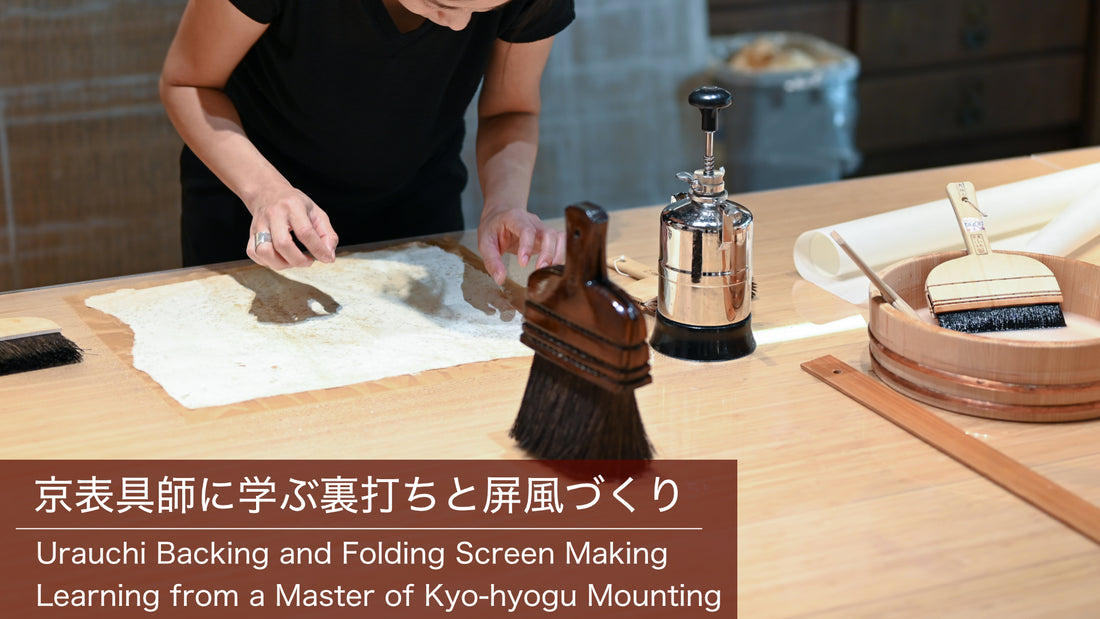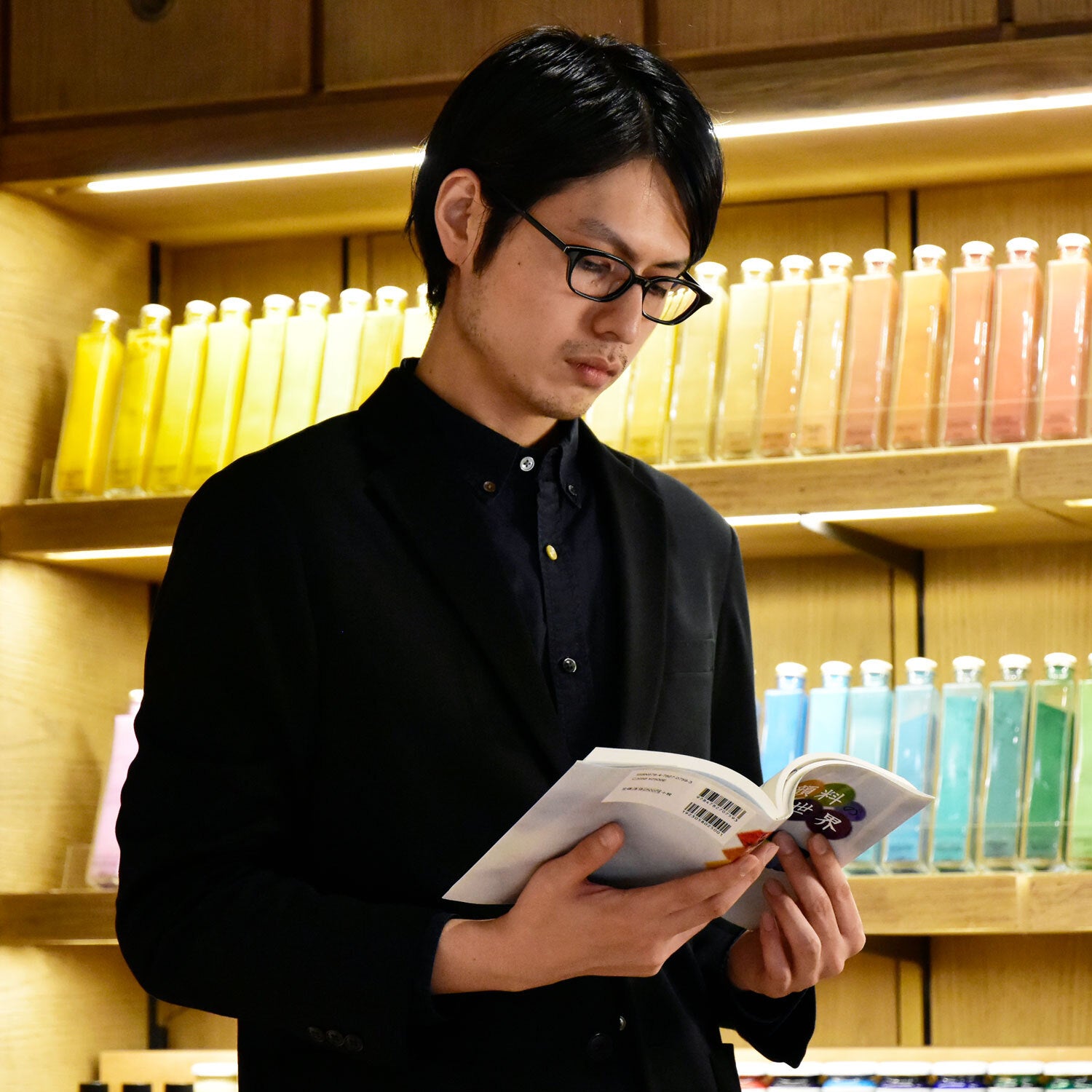**********
Urauchi backing is a technique that is applied to prevent and deform works used using paper and silk as a base material. It is used to dress in the hanging scrolls, foreheads, sliding doors, folding screens, etc., which are traditional Japanese art styles in Japan, and are also used to repair Japanese books and Western books.
It is an inseparable process to display thin paper and silk works, but some people may find it a little high because it requires special tools and techniques.
This time, PIGMENT TOKYO has held a workshop for aspects and table tools for such customers.

At the beginning of the workshop, a demonstration was held by Mr. Monobe.
If the half -paper is crushed and torn, let's look at the process of what kind of repair will be done on a backing.
On the left is the semi -paper prepared for the demonstration.
Let's take a look at how such Japanese paper is backed.
First, spread the paper (work), and extend the basal wood with a brush including water.

After that, after repairing the torn position with tweezers, etc., glue on the entire surface of the Japanese paper for the backing. After that, glue the paper and the back paper, put it on a temporary tension plate, and dry it to complete.
The photo below is a torn semi -paper with a temporary tone plate. You can see that you can repair the deteriorated paper neatly by lining.
For detailed processing processes, "Pigment ArticleS" "Backing work -Method-"Please refer to the.

The Pigment staff also try to back the wrinkles.

In the case of thin half paper, it can be removed from the board in a few hours, but this time the Japanese paper was thick, so it was dried for about a day.

Here is the comparison before and after stretching. The wrinkles that were wrinkled were also flat like this.
Not only picture ink and rock paint, but also such acrylic paint can be backed.

In "Let's play with traditional technology!", As a parent -child project, a workshop was held to make children's works on small folding screens and hanging scrolls.


In the latter half of the workshop, as a backing experience, we challenged our own backing work.
Not only adults, but also children were working seriously until the end.

Since our lab's workshop has a polite support of the instructor, children can work with peace of mind.

Of course, the work drawn on the drawing paper with crayons can be backed.
The traditional technique, which is a traditional technique, feels something far from somewhere, but if you tailor something familiar, it feels a little shortened.

This workshop is a special project, but we also sell tools used in this lab.
If you want to do it yourself, this lab article "Backing work -contours-"and"Backing work -Method-Please feel free to contact us or feel free to contact our lab art supplies.
event information
※This event has ended
[Special lectures] backing
Eating schedule: Saturday, August 12, 2023
Time: 13: 00-17: 00
Lecturer: Yasunori Monobe (Monobe Eki -Shodo)
Tuition fee: General ¥ 16,500 (including tax / material cost)
Target age: None
[Summer vacation parent and child] Let's play with traditional technology!
Held schedule: Sunday, August 13, 2023
※This event has ended
Time: 13: 00-16: 00
Lecturer: Yasunori Monobe (Monobe Eki -Shodo)
Tuition fee: 1 parent and child set (for 2 people) ¥ 14,300 (tax included, material cost)
Target grade: 4 years old or older
* Click here for information on the latest event / workshops.
https://pigment.tokyo/collections/workshop 

